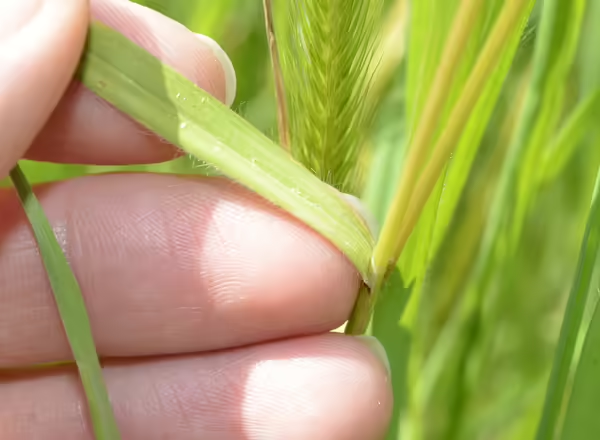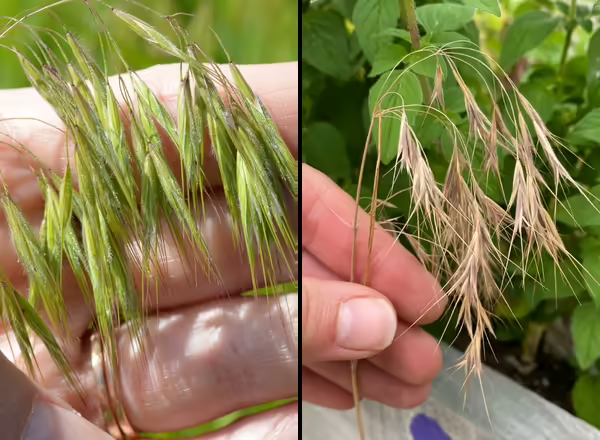
It might be difficult to imagine that even in the middle of winter, certain weeds have gotten a jumpstart on growth for the spring. Annual plants complete their life cycle in one year and are often divided into winter annuals and summer annuals. Several grasses fall into each of these categories. Winter annuals include Cheatgrass and Annual Bluegrass, while the Foxtails, Witchgrass, and Crabgrass are summer annuals.
Do winter annual grasses really grow in the winter? Most winter annuals will germinate in the fall, getting established before the bitterness of the season truly sets in. They then lay in wait in a type of stasis, waiting for temperatures to start to warm. They then can flower and set seed in early spring.
Let’s look a bit closer at Cheatgrass, Bromus tectorum.
One of many Bromes
This grass is in the Brome genus, a group of cool-season grasses. More than half the species of bromes found in Illinois are non-native. Cheatgrass is no exception. Known by many different names, including downy brome, downy chess, and soft chess, this grass has invasive qualities, especially in the western U.S. It has altered fire regimes by increasing the frequency and spread of fires.

Identification
Cheatgrass thrives in disturbed habitats. I’ve seen it growing in gravel lots, along roads, in fields, and in prairie restorations. It can stay relatively short, under a foot, or grow up to three feet tall.
The leaf blades, inflorescence, and spikelets are all covered in long, soft hairs. You can find a tall membranous ligule.

In late spring to early summer, Cheatgrass flowers, producing a panicle that curves strongly and droops. Its hairy spikelets are elongated and awned.
The easiest time of year for me to identify Cheatgrass is in late summer through fall, once it has senesced. The inflorescence that remains is strongly drooped, and the dried-out spikelets are split open, with the awns held apart to form a distinctive v-shape.
Cheatgrass, Bromus tectorum, is a non-native winter or spring annual. It grows between one and three feet tall in disturbed, low-quality habitats. The leaf blades are covered with long, soft hairs.
When identifying this grass, look for its tall membranous ligule. The inflorescence is a...
Never miss a new post! Sign up for our email list.
ABOUT THE AUTHOR: Erin Garrett is a Natural Resources, Environment, and Energy Educator for University of Illinois Extension serving Alexander, Johnson, Massac, Pulaski, and Union counties. Erin develops and delivers high impact programming to adults and youth to help them develop an appreciation for natural resources and to empower them to make small changes to positively impact the environment. Erin’s programming focuses on why homeowners should consider choosing native plants, how to support native pollinators, how to identify grasses, how to identify and manage invasive species, and developing an appreciation for prairie ecosystems.
ABOUT THE BLOG: Grasses at a Glance dives into grass identification, focusing on tips and tricks that make grass identification possible. Get information about native and non-native species, how to tell look-alikes apart, and which grasses you can find in Illinois.